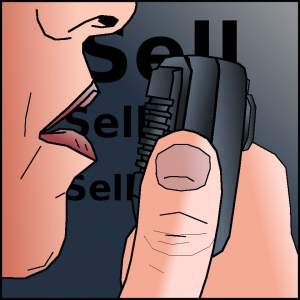Binary Option pricing is similar to some extent to vanilla option pricing in that is uses the basics of the Black Scholes pricing model to create a cash or nothing payout profile.
can also be priced as a asset or nothing type of payout, where the prices of the asset need to be valued prior to the pricing model evaluation.
A binary option has a predefined payoff. For most options the payoff
Binary Option pricing is similar to some extent to vanilla option pricing in that is uses the basics of the
Black-Scholes pricing model to create a cash or nothing payout profile.
Binary options, or digitals options can also be priced as a asset or nothing type of payout, where the prices of the asset need to be valued prior to the pricing model evaluation.
A
binary option has a predefined payoff. For most options the payoff of an option is unknown and is only known upon exercise of the option, which the payoff for a call option being the asset price on exercised less the strike price of the options. In contrast a digital option has the payoff defined when the option is issued. For example, the payout is a specific cash value know prior to entering the transaction.
The payoff of a Digital option is preset value (cash amount -as in a Cash-or-Nothing option) or a unit of the underlying option (ie an Asset-or-Nothing option). For example a Cash-or-Nothing option on a stock would either payoff zero or a fixed cash at expiry, similar an Asset-or-Nothing option would either payoff zero or a fixed number of stocks.
In pricing a
binary option, there are a number of variables that need to be used, similar to a vanilla options. These variables include:
Market Price :
The market price of the underlying asset on the valuation date. When evaluating an option in real-time, a trader would used the current underlying price to determine the current market price. Traders could also use the closing price of the prior day to gauge an estimate of the market price.
Strike Price :
This is the price level at which the option holder has the right to buy or sell the underlying asset. It is the most straightforward input as it will always be given in the option contract. In general, the market price in a
binary option is also the strike price. In a “above or below” option, the market price is the price that is used to determine the strike price.
Time to Maturity :
The time until the option expires and the holder is no longer entitled to exercise the option. For
binary options, this is usually the end of the day or the week, as well as a specific time in terms of hours.
Interest Rate :
The risk free interest rate for the period until the option expires. The risk free rate should typically be a zero coupon government bond yield. For example the risk free rate for the US is current less than 25 basis points or very close to zero. This factor will not change the
value of a binary option since most are very short dated.
Volatility :
 |
| Albert Einstein Understood Binary Decision Making. |
Volatility is probably the most important single input to any option pricing model. There are numerous methods for estimating volatility.
Historic volatility entails using historic price data for share price movements. A key issue is how far into the past to collect data from. A useful rule of thumb is to collect data from as far back as the options term. Historic volatility is often considered as flawed as it assumes the past will reflect the future – thus several forward-looking measures of volatility can be more powerful and accurate:
Historic Volatility is the volatility of an asset based on its past price movements. The volatility of the underlying asset for the option’s remaining life is a key input into most option pricing models, however this volatility is never in practice observable since it is based on future price movements which cannot be known. Thus, volatility must be forecast, and one method of forecast is to use the historic volatility of the asset which is calculated from its past price movements.
Typically, daily data is used and the standard deviation of the daily log of price movements is the volatility. If daily data is used then a daily volatility is the output from a calculation. For input into an option pricing model such as Black Scholes the annualized volatility is required.
Implied Volatility is the volatility implied by the market price of traded options. As the price is already known and the volatility (which is typically an input) is unknown the pricing model is reversed to determine the volatility. Other models such as ARCH, EWMA, GARCH use historic data and condition the data using factors such as mean reversion to achieve a more accurate volatility forecast.
Implied Volatility is the volatility derived from an option with a known price (or premium). If the price of an option is known, the other inputs (such as spot, strike, time etc) can be either taken from the option contract or market data sources, thus the only remaining unknown input – the volatility can be solved for. The Black Scholes option pricing formula cannot be reversed to express volatility in terms of other inputs so an iterative approach is required by testing different volatilities.
 |
Binary Code looks like this
|
Yield :
The average yield generated by the underlying asset for the life of the option. This can be either a dividend or the income generated by a commodity. It is often difficult to forecast the yield for the entire option life so the current yield of the asset is often used.
Conclusion
Binary options are generally priced in a way were the dealer or broker is taking a fee in the theoretical price of the option. There are numerous tools that can be used to determine if the
price of a binary option is relatively fair, and if your broker or dealer is given you a realistic market price.
















